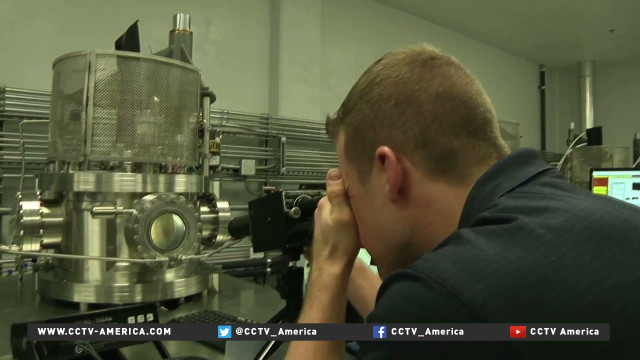Shopping for just the right diamond can be an exhilarating experience, not to mention expensive. But consumers are now saving thousands of dollars thanks to technological breakthroughs that allow diamonds to be created in a lab.
CCTV’s Shraysi Tandon filed this report from New York.

Lab-grown certified, but cheaper than mined diamonds
Shopping for just the right diamond can be an exhilarating experience, not to mention expensive. But consumers are now saving thousands of dollars thanks to technological breakthroughs that allow diamonds to be created in a lab.Diamonds are a girl’s best friend, but a lab grown diamond may be a savvy consumer’s best friend. Instead of spending millions of years under the earth’s surface, these diamonds are created in a matter of weeks in a lab. They are developed in pressurized containers above ground, replicating what happens under the ground.
Listen to our diamond inspired Spotify playlist:
“A lab grown diamond is chemically, optically, physically identical and they are both certified as a diamond and the only distinction is that a laboratory diamond comes from above the earth and a natural or mined diamond comes from below the earth,” said Neil Koppel, CEO, Renaissance Diamonds Corporation.
The synthetic diamonds are available in a variety of colors, cuts, clarity and carats, and they’re a fraction of the cost of a mined diamond.
“We create the colorless diamonds which everybody is familiar with, we create pink diamonds which are among the rarest diamonds in the world, and we create canary diamonds. The colorless typically sell for about 30-40 percent less than a typical mined diamond,” Koppel said. “The advantages are the cutting and quality are really top-notch, the finish, the polish are all excellent and now you’re really buying that Mercedes type quality in our diamonds.”
The lab created diamonds are also certified, but there are slightly different terms for grading synthetic diamonds, said Wuyi Wang, Director of Research and Development at the Gemological Institute of America.
Diamond experts say it’s impossible to tell the difference between a lab diamond and a mined diamond with the naked eye.
“We know diamond is composed of a carbon, 99.9 percent or even higher. But diamonds have tiny, tiny amount of defects, crystal defects, in the parts per million to parts per billion level,” Wand said. “And if we go to that level, natural diamonds and synthetic diamonds may show slight difference, but it’s not going to affect anything of the physical, chemical properties of the diamond itself.”
Cultured diamonds have been around since the late 1950s but have only started to become popular in recent years as consumers opt for gems that are environmentally friendly, easy on the wallet and don’t come from war zones.
Follow Shraysi Tandon on Twitter @ShraysiTandon
Robert Bates talks about the impact of synthetic diamonds on the jewelry industry
CCTV America’s Michelle Makori spoke with the News Director of the jewelry industry trade publication JCK, Robert Bates, who explains what impact synthetic diamonds could have on the precious stones industry.

Robert Bates on fake diamonds' impact on jewelry industry
The News Director of the jewelry industry trade publication JCK, Robert Bates, spoke to CCTV America's Michelle Makori to explain what impact synthetic diamonds could have on the precious stones industry.
Play our celebrity diamond quiz:
 CGTN America
CGTN America

